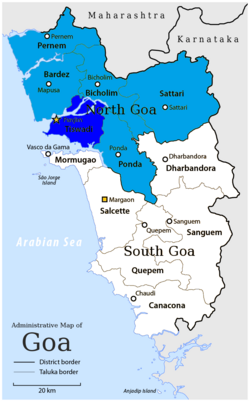Old Goa is a historical site and city situated on the southern banks of the River Mandovi, within the Tiswadi taluka (Ilhas) of North Goa district, in the Indian state of Goa.

Panaji is the capital of the Indian state of Goa and the headquarters of North Goa district. Previously, it was the territorial capital of the former Portuguese India. It lies on the banks of the Mandovi river estuary in the Tiswadi sub-district (taluka). With a population of 114,759 in the metropolitan area, Panaji is Goa's largest urban agglomeration, ahead of Margao and Mormugao.

The Mandovi or Mahadayi, formerly known as the Rio de Goa, is a river described as the lifeline of the Indian state of Goa. The Mandovi and the Zuari are the two principal rivers in the state of Goa. The Mandovi joins with the Zuari at a common creek at Cabo Aguada, forming the Mormugao harbour. Panaji, the state capital and Old Goa, the former capital of Goa, are both situated on the left bank of the Mandovi.

The Zuari RiverZuvari, pronounced ) is the largest river in the state of Goa, India. It is a tidal river which originates at Hemad-Barshem in the Western Ghats. The Zuari is also referred to as the Aghanashani in the interior regions. It flows in a south-westerly direction through the talukas of Tiswadi, Ponda, Mormugao, Salcete, Sanguem and Quepem.

Ribandar is a town in Tiswadi, Goa, located between the cities of Panjim and Old Goa.
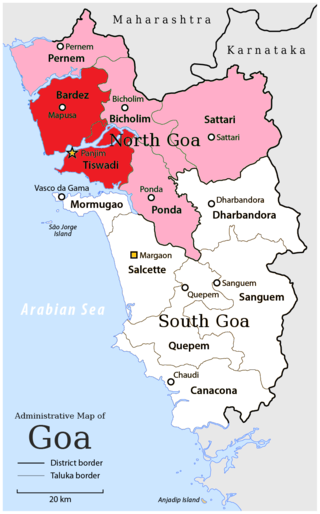
North Goa district is one of the two districts that constitutes the state of Goa, India. The district has an area of 1,736 square kilometres, and is bounded by Kolhapur and Sindhudurg districts of Maharashtra state to the north and by Belgavi district of Karnataka to the east, by South Goa district to the south, and by the Arabian Sea to the west.

Chorão, also known as Choddnnem or Chodan, is an island along the Mandovi River near Tiswadi, Goa, India. It is the largest among other 17 islands of Goa. It is located 5 kilometres away from the state capital, the city of Panaji and 10 kilometres away from the city of Mapusa.
The island of Divar lies in the Mandovi river in the Indian state of Goa.
Cumbarjua, is an island and town within the Mandovi River in Goa. It is situated to the east of Goa's capital Panjim at a distance of 20 kilometres. It is one of 6 major islands between the Mandovi and Zuari, he others being:

Cortalim is a village in Morumugão, Goa, India. Its native Goan population is entirely Catholic and their main occupations include fishing and agriculture. Located on the banks of the Zuari River, it was previously known as Kushasthale.

Pondataluka is a subdivision of the district of South Goa, in the Indian state of Goa. Its administrative headquarters is the township of Ponda.
St Estevam is an estuarine islet in the Tiswadi taluka, Goa state, India. St Estevam is commonly referred as Jūvã (Isle) and has earned the monicker Šākêchô Jūvõ—the island of vegetables—famed for its long, seven-ridged, light green ladyfingers. Therefore, the people of Jūvã came to be nicknamed bhennddem. The island is named after St. Stephen. It is one of Goa's most prosperous villages, often quoted by ex-Chief Minister Pratapsingh Rane for having a high per capita income.

São Mathias also known as Malar is a village on Divar Island, Tiswadi or Ilhas, in the Indian state of Goa. The island is located 10 km upriver from Panjim.

The Zuari Bridge is a bridge between North Goa and South Goa, India. It carries the NH 66 over the tidal part of the Zuari River, between the villages of Agaçaim and Cortalim. It is a few metres downstream of the Konkan Railway Bridge.
Mercês is a neighborhood located in the northeastern part of the city of Panaji, capital of the Indian state of Goa. It is completely located on the island of Tiswadi, one of the talukas in the state of Goa. It is located between the Mandovi River and the Bambolim neighborhood. The neighborhood of Mercês is well connected with various tourist destinations such as Bambolim, Panjim, Miramar and Caranzalem. It is well known among the people of Goa due to a famous wedding venue situated here known as Alua Mercês. Its school is Our Lady of Mercês High School. For accommodations there are a number of houses and villas to rent. One can also get bikes for hire to visit nearby places.
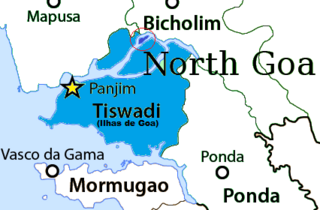
Vanxim or Capão is an island of Goa situated in the Ilhas region. One can reach here by taking a ferry from Divar. The colonial name for Vanxim was Capão. One may see a lot of houses with few villagers many of whom are fisher-folk in the area. Silveiras, Furtados, Vas, Olivera are surnames of people. Mahendra Gaunekar sold the parts of the island to Ozone corporate. Luxury hotel and Golf Course is sort to be forced upon this island but faced resistance from alert islanders and others.
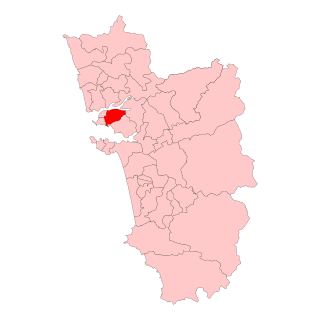
Santa Cruz Assembly constituency is one of the original Goa Legislative Assembly constituency seats in the Tiswadi Taluka of North Goa District in the State of Goa. The other constituencies in Tiswadi are Panaji, Taleigao, St. Andre and Cumbarjua.
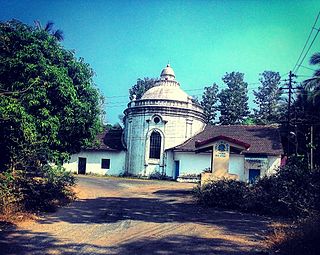
Naroa is a village located on the eastern tip of the island of Divar, in the Indian state of Goa. It has a population of barely a thousand people, with about 80 houses.
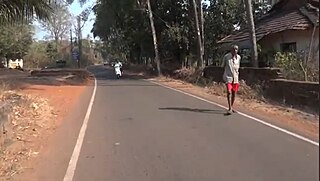
Pirna is a village in the North Goa sub-district or taluka of Bardez and is located in the northern edge of the sub-district. It is close to the Colvale river and is the home of the 150-metre long Pirna-Ozarim bridge at Thorli Chandai. The bridge connects Pirna in Bardez taluka with Pernem taluka. It was inaugurated in May 2006.
The Cumbarjua Canal is a distributary channel formed by the merger of the Mandovi and Zuari rivers in Goa, India. Its flow has led to the formation of river deltas; the most prominent of them are Ilhas de Goa, Cumbarjua and St Estevam.
